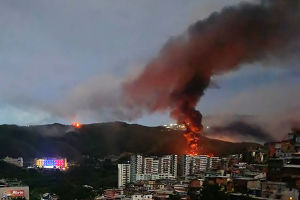HIking in the Negev Desert
The Negev is a paradise for hikers and for those seeking an exciting trek inside Israel's largest desert, local expert tour guide Yoel Oren is sharing his favorites in the post below.
From very short hikes, 2-3 hours long, to 4-5 days of hikng, or even more. If you are trekking the Israel National Trail (INT), then you walk at least two and a half weeks in the Negev! The best seasons for hiking in the Negev are autumn, winter and early spring. During the summer, it is possible to hike early in the morning or in the afternoon, finding a nice shade around noon to keep away from the heat. In that seaon you rather hike in the more elevated regions, rather than around the boiling rift valley, and you must carry a decent amount of water!
Since we will soon be beginning the best hiking season for Negev, we will provide some suggestions on wonderful hikes.
The East Ramon Trek
This trek begins in Mitzpe Ramon on the west, in altitude of over 900 meters above sea level, and ends in Sappir, in the Arava valley, around sea level. You can easily transport yourself to and from the hike with public buses.
Sunset at Ramon makhtesh
Beginning the trek at the Visitors' Center, operated by the Parks and Reserves Authority (NPA), you can get oriented and collect more and updated information. You can also buy here a topographic map, although in Hebrew, but the rangers can help showing you the trail on the map and give you some hints.
The Makhtesh looks like a crater, and sometimes reffered to as one, but actually it is something different. You might simplify it and call it an "erosivic crater". This phenomenon is unique to Israel and Sinai, so the geological term comes from Hebrew, meaning a traditional grinding vessel.
The makhteshim (plural...) are created by a very complex sequence of geological processes. To put it in a nutshell, we can determine three stages: 1: Tectonic forces curve ancient "sandwich" layers of limestone, sandstone and limestone, creating an anticline; 2:Ancient rivers shave the whole region, exposing the middle layer of sandstone (imagine an orange that its cap has been removed, exposing the juicy body); 3:lifting of the region as a side effect of the Dead Sea Rift, and bending the flat shaved surface towards the east, causing the erosivic sandstone drift towards the rift, leaving the less erosivic limestone behind (imagination, again: a bucket filled with sand is lifted and diverted, the sand falls leaving the plastic bucket behind).
Now, after standing impressed by the beauty and complexity, it is time to leave civilization behind for the next few days.. We will follow the INT throughout the trek, with its orange-blue-white markings. The first day will be dedicated to crossing the makhtesh to the other edge, on our way we will climb to the "Ramon Tooth" (ignious ancient rocks) and visit the Amonite Wall, where you can find fossils of those creatures that populated the planet during the reign of the dinosaurs, and vanished with them 65 millions of years ago. We will camp in the Gevanim dry bed, notice that you must camp in the vicinity of the official night camp of the NPA, since we are in a nature reserve. Distance of walking: 15 km.
Nekarot dry river bed
The second day will find us walking up the Saharonim cliff, actually the southrn edge of the Makhtesh. From the top of the ridge, there is a beautiful view of the southern Negev, from the Egyptian border beyond Mt. Karkom on the west, to the Edom mountains of Jordan on the east. going down the cliff we walk through th Nekarot "Horseshue", where the dry wadi Nekarot makes an omega into the cliffs of the Makhtesh, creating a nice gorge. Out of the horseshue, we ascend steeply to the Karbolet Hareirim Ridge (meaning rooster's comb) for a beatiful view of the Makhtesh and of the next sections of the hike. After walking on a flat hamada (stoney surface) we cross Wadi Ma'ok dry bed, where one can find lots of shade under the acacia trees, a good place to rest and have lunch, and a noon siesta. Make sure you wake up at least two and a half hours before darkness! Continuing on the trail, we have some climbing to do, reaching a saddle where you can find some more amonites. Descending on its eastern side, you soon reach a beautiful dry fall, the path bypasses comfortably. At its foot there is a frenzy of curving of the rock layers, this is known as the "Crazy Wall". The next dry bed coming and joining from the north is significant, because of the very small but permanent spring Ein Geled ("the spring of the leather") which hides there, an attraction for animals and emergency water for desperate hikers. To reach it go up the bed for some 300 meters following a white marking. Back on the main path, a kilometer and a half away, is another impressive dry fall, which the trail bypasses on its right. Under the fall there is a pothole, occassionally filled with water after a decent flashflood, creating a refreshing pool. Unfortunately, this pool is often dry... The campsite is 500 meters away, a place to rest after walking 16 km today! Look under large tamarisk bushes in the main Nekarot wadi, which we just reached, for bottles of water kindly left for you by hikers, rangers and jeepers. When you sleep, protect your food from the cheaky wolves that tend to grab your bags away and look inside for yummies, you might waste a meaningful amount of time looking for them in the morning, and finding them a little torn... or not finding them at all!
Day three, rise and shine!
The last day of the trek, we go down the Nekarot dry bed, then climbing to Mt. Yahav for a rewarding view (and cellphone signal!). Going down the trail in a most beautiful gorge , opening up to a magical valley of vanilla-chocolate ice cream, represented by the combination of the chalk and flint rocks. Some lone hills decorate the vally, remainders of the time before the young erosion designed this valley. The number of acacia trees rise, our sign to look for the ascending path the Tzvira and Eshborn cracks. These are part of the erosion process, a canyon in creation! A stunning view! On with the trail that winds around some more chalk & flint ice cream, passing an ancient caldera, a real volcanic crater. You can define the ancient crater only by tracing the volcanic rocks you pass by. A volcanic dyke next to a saddle sign the end of the trek: Once on the saddle appears the village of Sappir, and after walking 19 km, we're back in civilization... Have a cold beer at the grocery, and look for the bus on the main Arava highway!



























